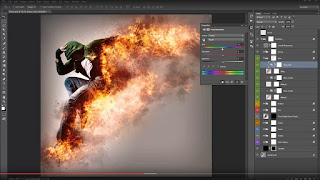Week 2: Math & Art
 |
|
|
I like to think that I am more of an art person, however as Professor Vesna mentioned in the lecture this week that artist as famous as Leonardo Di Vinci used math to create his pieces. Leonardo used math formulas to notice perspective, which in his studies he explained the distance between the eye and the art pieces (Vesna). This statement is particularly the case in today's time where technology is important to our culture. Technology helps people to create art every time they use a simple application like Excel and Photoshop. In my job, I work with Photoshop and I use the most basic forms of measurement and math to create my original art pieces. Without math, there would not be the preciseness needed to create these images, while technology has helped to bridge the relationship between math and art. (Kim).
 |
|
|
 |
|
|
References
Kim, Daniel, Seung-Woo Son, and Hawoong Jeong. "Large-Scale Quantitative Analysis of Painting Arts." Nature News. Nature Publishing Group, 11 Dec. 2014. Web. 12 Apr. 2017. <https://www.nature.com/articles/srep07370>.
Lyu, Siwei. "Digital Technique for Art Authentication." The Science Teacher 72.1, ART AND SCIENCE (2005): 12. Dartmouth College. Web. 12 Apr. 2017. <http://www.cs.dartmouth.edu/~rockmore/pnas-rev.pdf>.
Trosper, Jaime. "The Mathematics in Van Gogh's Most Famous Painting, 'Starry Night'." Futurism. N.p., 30 Nov. 2016. Web. 13 Apr. 2017. <https://futurism.com/mathematics-van-goghs-famous-painting-starry-night/>.
Whitaker, Rodney. "The Relationship Between Art and Technology." People.clarkson.edu. N.p., n.d. Web. 13 Apr. 2017. <http://people.clarkson.edu/~whitakrj/The_Relationship_Between_art_and_technology.html>.
Vesna, Victoria. “Mathematics.” Lecture. CoLE DESMA 9. Web.
You present an interesting viewpoint on this topic, considering your work with Photoshop, which is the epitome of math being used to create art. I appreciate your comments on video games. I usually overlook video games as a form of art, but after reading your perception of them, I now see how they embody the intersection of math and art. Your final anecdote reminded of an article I read about how an analysis of the colors of an art piece can determine when the piece was created, based on what materials were available at that time. Both of these examples illustrate how science can be used to study art.
ReplyDeleteI thought the use of video games was a cool example because both the math and art aspects of video games are often overlooked. I also thought your point about how important the use of math is in photoshop in order to have preciseness and accuracy and think that could be said for any art form in order to get symmetry, correct spacing, balance, etc. I found it especially interesting that a piece of art was actually used to discover mathematic equations, such as the equation for turbulence in Van Gough's "Starry Night".
ReplyDeleteEmma,
ReplyDeleteYour points are so interesting. I, too, was surprised to see how much of myself is part math and part art. It was surprising to know that people can be both and use both parts of themselves to create something so special. It's amazing to go back to see throughout history how many pieces of art and aspects of science and math were influenced by each other.